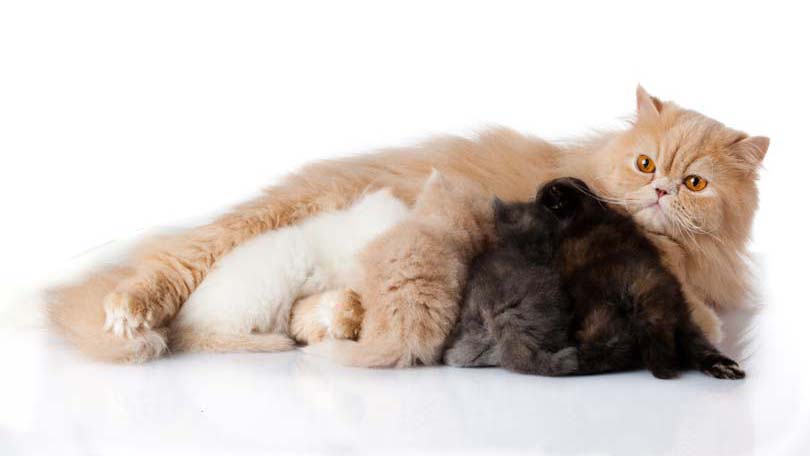
A cat reaches reproductive maturity between five and nine months of age, or upon the time they reach 4.5 to 7.0 pounds in weight. It is possible for domestic longhaired and shorthaired cats, as well as feral cats, may reach sexual maturity faster than purebred breeds and indoor cats.
Female cats have heat patterns that last between seven and twenty-one days. If the animal is not impregnated, her heat patterns may become irregular, with periods of non-heat becoming brief, often as short as two days. When experiencing estrus, or heat, a female cat may make loud, howling sounds, and rub themselves along the floor with the tail raised. Heat cycles are most common between January and September, when the amount of daylight is longer, but can occur at any time. Seasonal reproduction is encouraged by the warmer temperatures as well.
Once a suitable male has encountered the female, copulation quickly ensues, as usually results in a pregnancy. The duration of gestation in cats lasts from fifty-six to seventy-one days, with the average length being sixty-one days. The average number of litters that a female can produce within one year is three to five, with the average litter containing four to six kittens.
The birthing process is called queening, and preparations for this process should begin several weeks ahead of time. Giving the female a box in which to birth in should be done, and it should be lined with blankets or towels. At queening, the box should be lined with newspapers in order to aid in soaking up any fluids.
There are three stages of feline labor. In the first stage, the cervix will soften and dilate, with the animal moaning or panting. Restless behavior may be noted, as well as frequent trips to the litter box. The second stage begins when the female begins to push out her first kitten, which takes the longest to deliver. This first birth will dilate the cervix in preparation for the remaining kittens. Each kitten should take between fifteen and thirty minutes to be born. The delivery of the placenta is the third stage of delivery.
At birth, each kitten is born within his own amniotic sac. If this sac is not broken by the birthing process, the mother will break it, as well as sever the umbilical cord. After all of the kittens are delivered, the mother also eats the placenta, which stimulates lactation. Soon after birth, the mother will lick her kittens; this helps to clean and dry the new babies, as well as stimulate their circulation.
At birth, the kitten is blind, deaf, and helpless. They lack distinctive color patterns, and some do not acquire their unique markings until several weeks later. The mother will nurse her kittens until she begins to wean them, usually around four months. At this point, additional food should be introduced to the kitten. Hard chow formulated specifically for kittens can be given. It may be softened with water to make chewing more comfortable. Cow’s milk should not be given to kittens, as most will develop lactose intolerance as they grow, and the cow’s milk will cause gastric problems.





